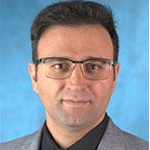Soft Actuators for Artificial Muscles
A special issue of Actuators (ISSN 2076-0825). This special issue belongs to the section "Actuators for Robotics".
Deadline for manuscript submissions: closed (30 June 2022) | Viewed by 11969
Special Issue Editors
Interests: soft actuators and soft robotics; computational intelligence; automatic control; system identification; bio-inspired computational methods; optimization
Special Issues, Collections and Topics in MDPI journals
Interests: neurorehabilitation technology; neuroplasticity; soft actuators and soft robotics; computational intelligence; bio-inspired computational methods
Interests: physical human–robot interaction; compliant/variable compliance mechanisms; rehabilitation robotics
Special Issues, Collections and Topics in MDPI journals
Interests: soft robotics; rehabilitation robotics; human–robot interaction; mechatronics and biomechanics
Special Issue Information
Dear Colleagues,
With expanding interest in soft robotics as a human-safe counterpart of traditional industrial robotics, the field of soft actuators working as artificial muscles to actuate these machines has been subject to intense research in the last two decades. The range of actuators capable of mechanical response to various kinds of stimuli has become extensive, covering the vast spectrum of interesting properties utilizable in soft robotics applications. However, many challenges remain (or are created) when trying to design useful machines actuated by this type of soft structure.
This Special Issue aims to attract papers devoted to any aspect of artificial muscle (AM)-related research, ranging from their design as well as the design of AM-actuated mechanisms to their modeling and/or control, including pneumatic soft actuators (fluidic muscles, PAMs), polymeric actuators (DEAs and IPMC), shape memory alloys, stimuli-responsive gels, magnetostrictive actuators, and more.
Dr. Alexander Hošovský
Prof. Dr. Silvia Elizabeth Rodrigo,
Dr. Amir Jafari
Dr. Nafiseh Ebrahimi
Guest Editors
Manuscript Submission Information
Manuscripts should be submitted online at www.mdpi.com by registering and logging in to this website. Once you are registered, click here to go to the submission form. Manuscripts can be submitted until the deadline. All submissions that pass pre-check are peer-reviewed. Accepted papers will be published continuously in the journal (as soon as accepted) and will be listed together on the special issue website. Research articles, review articles as well as short communications are invited. For planned papers, a title and short abstract (about 100 words) can be sent to the Editorial Office for announcement on this website.
Submitted manuscripts should not have been published previously, nor be under consideration for publication elsewhere (except conference proceedings papers). All manuscripts are thoroughly refereed through a single-blind peer-review process. A guide for authors and other relevant information for submission of manuscripts is available on the Instructions for Authors page. Actuators is an international peer-reviewed open access monthly journal published by MDPI.
Please visit the Instructions for Authors page before submitting a manuscript. The Article Processing Charge (APC) for publication in this open access journal is 2400 CHF (Swiss Francs). Submitted papers should be well formatted and use good English. Authors may use MDPI's English editing service prior to publication or during author revisions.
Keywords
- Pneumatic soft actuators
- Electroactive polymer actuators
- Thermally activated shape memory actuators
- Stimuli-responsive gels
- Magnetostrictive actuators
- Carbon nanotubes
- Magnetic soft actuators
- Modeling and intelligent control
- Design of soft actuators and soft robots
- Design and control optimization







